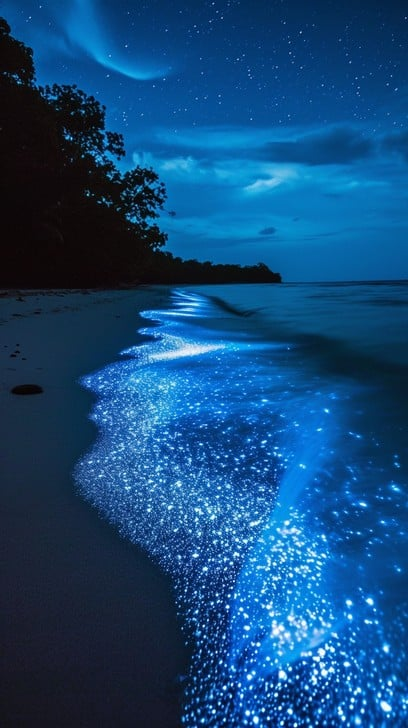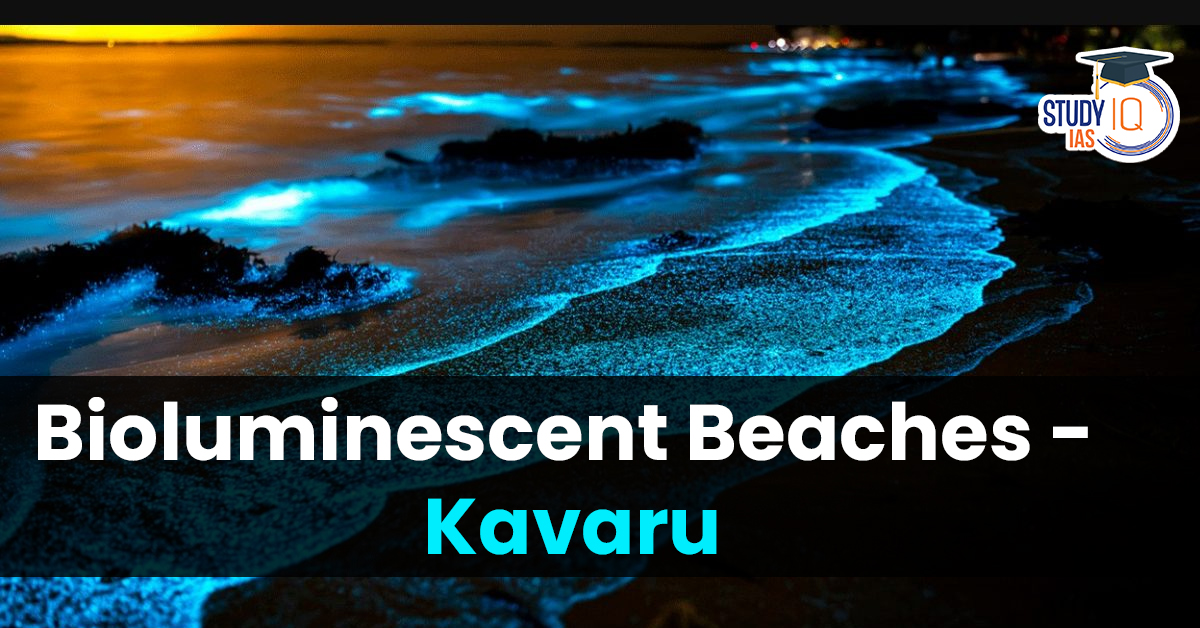Table of Contents
Context: Recently, bioluminescent blue waves were observed in the backwaters of Kochi, Kerala.
What is Bioluminescence or Kavaru?
- Bioluminescence is the emission of light by living organisms in the water caused by microscopic organisms:
- Plankton (Noctiluca scintillans or sea sparkle)
- Certain algae, fungi and bacteria
- These organisms produce light through a chemical reaction inside their bodies.
- The reaction involves a light-emitting pigment (luciferin) and an enzyme (luciferase).
- When water is disturbed — by waves, movement of boats or even footsteps — the organisms light up as a defence mechanism or to attract mates.
- The glow is usually blue, but sometimes red or brown (called red tide) depending on species and concentration.
- It got popularised in the public imagination through the Malayalam film “Kumbalangi Nights“.

- Bioluminescence can occur in: Beaches and shallow waters, Backwaters and estuaries & Paddy fields near coasts (like Kerala’s pokkali fields)
What Causes These Blooms?
- Environmental Factors: Eutrophication, High salinity and turbidity in estuarine and coastal waters, rising temperatures and reduced rainfall.
- Human-Induced Drivers: Agricultural runoff, urban discharge and Industrial effluents from nearby regions.
Famous Indian Spots
- Kumbalangi & Chellanam (Kochi, Kerala)
- Thiruvanmiyur Beach (Chennai)
- Betalbatim Beach (Goa)
- Bangaram Island (Lakshadweep)
Ecological Implications
On Marine Ecosystems
- Algal blooms can lead to Harmful Algal Blooms (HABs) causing hypoxia (low oxygen) → fish deaths, and biodiversity loss.
- It releases toxic compounds like: Hepatotoxins, Neurotoxins, Dermatotoxins etc.
On Aquatic Food Chains
- While plankton are crucial in the marine food chain, in excess they release harmful substances:
- Dimethyl sulfide, dissolved organic carbon, ammonium etc.


 Malabar Grey Hornbill, Characteristics a...
Malabar Grey Hornbill, Characteristics a...
 Salt Pan Land Cleared for Dharavi Redeve...
Salt Pan Land Cleared for Dharavi Redeve...
 Kerala and Tamil Nadu Unite for Nilgiri ...
Kerala and Tamil Nadu Unite for Nilgiri ...





















